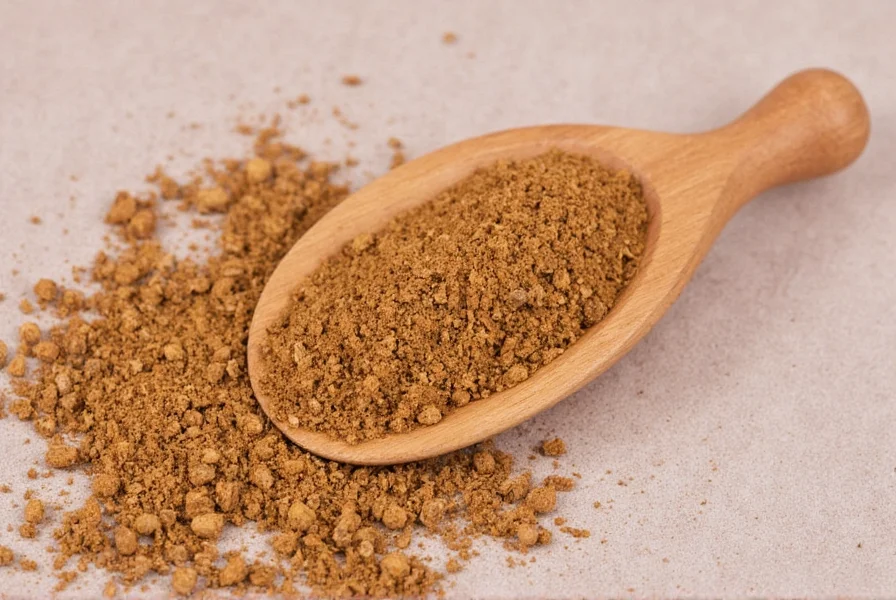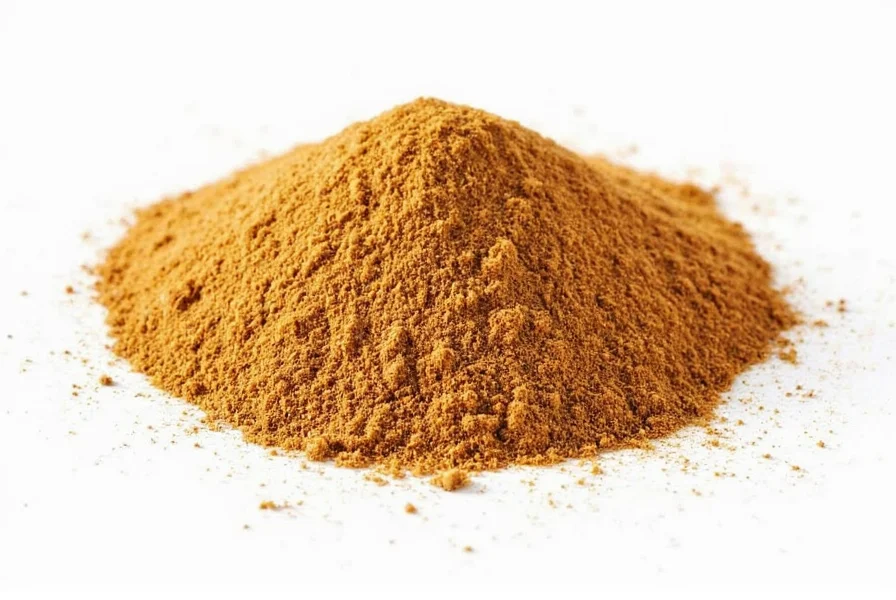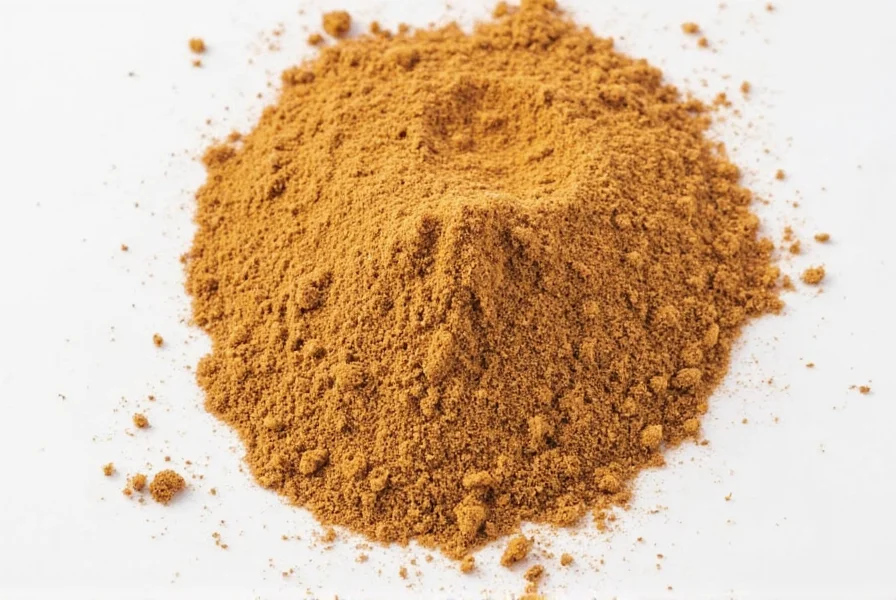Few spices demonstrate such a dramatic difference between whole and ground forms as nutmeg. That small, hard seed hidden inside a lacy mace covering transforms from an unassuming brown oval into a culinary powerhouse when freshly grated. Understanding this transformation reveals why professional chefs and home cooks committed to flavor quality keep whole nutmeg in their pantries.
What Exactly Is Fresh Nutmeg?
True nutmeg refers to the seed of the Myristica fragrans tree, native to the Banda Islands in Indonesia. When harvested, each fruit contains a single seed surrounded by a red, lacy aril (which becomes mace when dried). After careful drying for 6-8 weeks, the hard shell protects the inner seed until it's ready for use. This whole form maintains its complex chemical composition far longer than pre-ground alternatives.
Flavor Science: Why Fresh Nutmeg Outperforms Pre-Ground
The essential difference lies in chemistry. Fresh nutmeg contains approximately 7-14% essential oil, primarily composed of myristicin (up to 4%), elemicin, and safrole. These volatile compounds begin evaporating immediately after grinding:
| Compound | Concentration in Fresh Nutmeg | Concentration After 1 Week Ground | Impact on Flavor |
|---|---|---|---|
| Myristicin | 8-12% | <2% | Warm, nutty base notes |
| Elemicin | 2-4% | <0.5% | Clove-like spiciness |
| Sabinene | 1-3% | <0.2% | Citrus top notes |
This chemical degradation explains why pre-ground nutmeg often tastes flat or musty compared to its freshly grated counterpart. The flavor profile becomes one-dimensional as the more volatile top and middle notes evaporate first.
Selecting and Storing Whole Nutmeg
When choosing whole nutmeg, look for:
- Firm, heavy seeds (light ones indicate age or poor quality)
- Deep brown color without spots or cracks
- A slight bounce when dropped (fresh nutmeg has some moisture content)
Proper storage maintains freshness for up to 2 years:
- Keep in an airtight container away from light
- Store in a cool, dark place (not the refrigerator, which introduces moisture)
- Consider vacuum-sealing for long-term storage
Test freshness by scratching the surface with a knife—if you detect a strong aroma immediately, it's still viable. Older nutmeg will have little scent until grated.
Mastering the Art of Grating Fresh Nutmeg
The right technique makes all the difference in extracting maximum flavor:

- Tool selection: A fine microplane grater produces the best results, though traditional nutmeg graters (with small holes and a drawer to catch shavings) work well too. Avoid box graters, which create uneven particles.
- Temperature matters: Chill nutmeg in the freezer for 10-15 minutes before grating—this firms the seed and makes grating easier with less crumbling.
- Grating technique: Hold the nutmeg at a 45-degree angle and use short, downward strokes. Rotate the seed frequently for even wear.
- Quantity guidance: One whole nutmeg yields approximately 2-3 teaspoons of freshly grated spice—enough for multiple recipes.
Culinary Applications Where Fresh Nutmeg Shines
Certain dishes particularly benefit from the nuanced flavor of freshly grated nutmeg:
- Custards and creamy sauces: The warmth complements dairy beautifully without overpowering—add just after removing from heat
- Root vegetable preparations: Enhances roasted carrots, parsnips, and sweet potatoes
- Spinach dishes: A pinch transforms simple sautéed spinach
- Meat marinades: Particularly effective with pork and game meats
- Pickling spice blends: Adds complexity to vinegar-based preserves
Professional chefs often add fresh nutmeg in two stages—some early in cooking for depth, and a final grating at the end for aromatic brightness. Remember that nutmeg's flavor intensifies with cooking time, so adjust quantities accordingly.
Common Fresh Nutmeg Mistakes to Avoid
Even experienced cooks sometimes miss these key points:
- Over-grating: Nutmeg becomes bitter when used excessively—start with 1/8 teaspoon per serving and adjust
- Incorrect timing: Adding too early in the cooking process diminishes volatile compounds
- Poor storage: Keeping near heat sources or in transparent containers accelerates degradation
- Misidentifying quality: Assuming all brown seeds are equal—older nutmeg lacks flavor complexity
When substituting fresh for pre-ground, use approximately half the amount called for in recipes, as freshly grated nutmeg delivers more intense flavor.
Understanding Nutmeg's Shelf Life
While whole nutmeg maintains quality for 2-3 years when properly stored, its flavor profile evolves over time:
| Storage Duration | Flavor Characteristics | Best Culinary Uses |
|---|---|---|
| Fresh (0-6 months) | Bright, complex with citrus notes | Delicate sauces, custards, finishing touch |
| Mature (6-18 months) | Warmer, more pronounced nuttiness | Hearty stews, root vegetables, meat dishes |
| Aged (18+ months) | Muted, primarily warm base notes | Spice blends, long-cooked dishes |
This evolution means you might use the same nutmeg differently as it ages, rather than discarding it when it's no longer at peak freshness.
Exploring Nutmeg's Historical Significance
Nutmeg's journey from Indonesian islands to global kitchens reveals why freshness mattered historically. During the spice trade era, merchants would sometimes insert whole nutmeg into hollowed-out apples or pears to preserve freshness during long voyages. This practice underscores how valued the fresh form was—even when transportation took months. The Dutch went so far as to destroy nutmeg trees on secondary islands to maintain monopoly control, recognizing that the whole spice's quality couldn't be replicated once ground.

Conclusion: Embracing Fresh Nutmeg's Potential
The difference between fresh and pre-ground nutmeg represents one of the most dramatic flavor transformations available to home cooks. By understanding proper selection, storage, and usage techniques, you can access a dimension of flavor that elevates ordinary dishes to extraordinary. The minimal investment of keeping whole nutmeg and grating it fresh pays exponential dividends in culinary results. As with many quality ingredients, the extra step required to use fresh nutmeg separates adequate cooking from truly exceptional results.
How much fresh nutmeg equals one teaspoon of ground nutmeg?
Approximately 1.5 teaspoons of freshly grated nutmeg equals one teaspoon of pre-ground. However, because fresh nutmeg has more vibrant flavor, most chefs recommend using about half the amount called for in recipes when substituting fresh for ground to avoid overpowering dishes.
Can you freeze whole nutmeg to extend its shelf life?
Yes, freezing whole nutmeg in an airtight container can extend its optimal freshness period to 3-4 years. The key is preventing moisture exposure—place the nutmeg in a vacuum-sealed bag or double-wrapped in plastic before freezing. Thaw at room temperature for 10-15 minutes before grating for best results.
Why does fresh nutmeg sometimes taste bitter?
Bitterness typically occurs from overuse (nutmeg should be used sparingly) or from grating too aggressively, which releases compounds from the seed's outer layer. It can also happen if the nutmeg is past its prime—older seeds develop bitter compounds as their essential oils degrade. Proper storage in a cool, dark place helps prevent premature bitterness.
What's the best tool for grating small amounts of fresh nutmeg?
A fine microplane zester provides the most consistent results for small quantities. Traditional nutmeg graters (small handheld tools with a grating surface and collection drawer) work well but are less common today. Avoid standard box graters, which create uneven particles and waste precious spice. For occasional use, a fine cheese grater can substitute in a pinch.
Does fresh nutmeg have any health benefits beyond flavor?
Fresh nutmeg contains myristicin, which has demonstrated antioxidant properties in studies. It also provides small amounts of magnesium, copper, and B vitamins. However, these benefits are minimal at typical culinary usage levels. The primary advantage of fresh over pre-ground is flavor quality rather than nutritional differences, as the essential oils that provide superior taste also contain most of the beneficial compounds.
Frequently Asked Questions
How much fresh nutmeg equals one teaspoon of ground nutmeg?
Approximately 1.5 teaspoons of freshly grated nutmeg equals one teaspoon of pre-ground. However, because fresh nutmeg has more vibrant flavor, most chefs recommend using about half the amount called for in recipes when substituting fresh for ground to avoid overpowering dishes.
Can you freeze whole nutmeg to extend its shelf life?
Yes, freezing whole nutmeg in an airtight container can extend its optimal freshness period to 3-4 years. The key is preventing moisture exposure—place the nutmeg in a vacuum-sealed bag or double-wrapped in plastic before freezing. Thaw at room temperature for 10-15 minutes before grating for best results.
Why does fresh nutmeg sometimes taste bitter?
Bitterness typically occurs from overuse (nutmeg should be used sparingly) or from grating too aggressively, which releases compounds from the seed's outer layer. It can also happen if the nutmeg is past its prime—older seeds develop bitter compounds as their essential oils degrade. Proper storage in a cool, dark place helps prevent premature bitterness.
What's the best tool for grating small amounts of fresh nutmeg?
A fine microplane zester provides the most consistent results for small quantities. Traditional nutmeg graters (small handheld tools with a grating surface and collection drawer) work well but are less common today. Avoid standard box graters, which create uneven particles and waste precious spice. For occasional use, a fine cheese grater can substitute in a pinch.
Does fresh nutmeg have any health benefits beyond flavor?
Fresh nutmeg contains myristicin, which has demonstrated antioxidant properties in studies. It also provides small amounts of magnesium, copper, and B vitamins. However, these benefits are minimal at typical culinary usage levels. The primary advantage of fresh over pre-ground is flavor quality rather than nutritional differences, as the essential oils that provide superior taste also contain most of the beneficial compounds.











 浙公网安备
33010002000092号
浙公网安备
33010002000092号 浙B2-20120091-4
浙B2-20120091-4